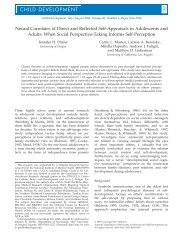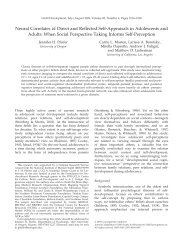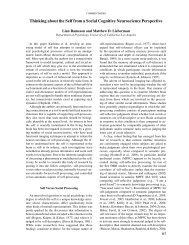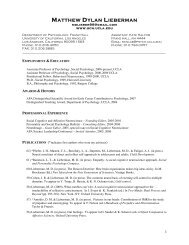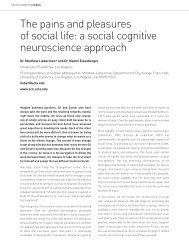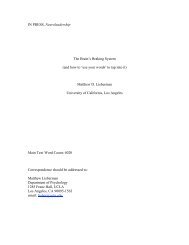In Progress – DO NOT CITE Attributional inference across cultures ...
In Progress – DO NOT CITE Attributional inference across cultures ...
In Progress – DO NOT CITE Attributional inference across cultures ...
Create successful ePaper yourself
Turn your PDF publications into a flip-book with our unique Google optimized e-Paper software.
Culture, Attribution, & Automaticity<br />
32<br />
were not under cognitive load. <strong>In</strong> study 4, we reversed the valence of the behavior such<br />
that targets appeared happy rather than anxious. We found that just as in the other<br />
studies, EA participants not under load corrected their attributions in the direction of<br />
more situational causality <strong>–</strong> a result inconsistent with a politeness bias account.<br />
Fourth, we compared the attributions made under cognitive load and without load<br />
<strong>across</strong> <strong>cultures</strong> directly. This comparison assumes that the behavior identifications were<br />
the same in both <strong>cultures</strong>. That is to say, these comparisons assume that EA and US<br />
participants were inferring the stable qualities of the target’s personality and situation<br />
based on behaviors with similar meanings <strong>across</strong> <strong>cultures</strong>. If EA participants judged the<br />
target’s anxious behavior to be much more anxious than did US participants, then<br />
attributions might have varied by culture because of the different meanings associated<br />
with the behavior rather than as a result of any differences in the attribution process that<br />
followed from this initial identification. <strong>In</strong> study 5, US and EA participants were asked<br />
to judge how anxious the target’s behavior was rather than make attributional <strong>inference</strong>s<br />
about her dispositional anxiety. These judgments did not vary by culture, suggesting that<br />
US and EA participants in studies 1-3 were making attributions for similarly understood<br />
behaviors. Consequently, attributional differences that occurred were likely to be the<br />
result of attributional processes differing <strong>across</strong> culture.<br />
Despite our best efforts, a fifth limitation was not effectively addressed. <strong>In</strong> none<br />
of the studies were the experimental materials translated into an EA language so they<br />
could be read in the native language by participants from both <strong>cultures</strong>. All participants<br />
run through the experiments indicated that they understood the instructions, materials,<br />
and ratings to be made, hopefully suggesting that the implications of this limitation may



